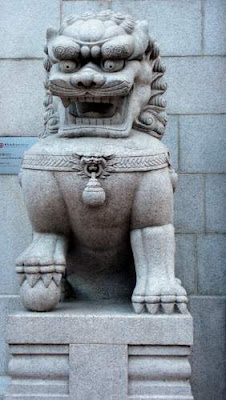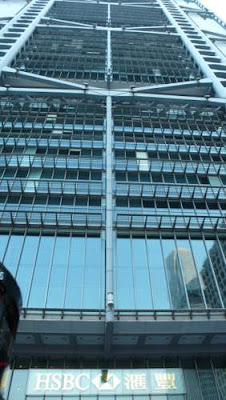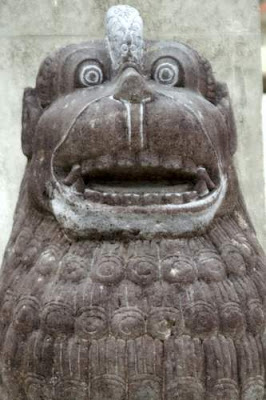 Dear Gentle Reader,
Dear Gentle Reader,I have wittered on about guardians (lions) this week.
It looks like we all need one.
If worrying about plastics (melamine) being substituted for protein in food was not enough of an issue...
What about fake eggs?
Fake eggs?
When boiled, they resemble real eggs, except the yolk is bouncier... Oh, and they have no protein and might harm you...
When raw, and in their fake(!) shells, they are difficult to differentiate from real eggs, although they lack the vaguely fishy smell associated with very fresh eggs. And raw ones sound watery when shaken...
The Standard, an English-language free daily paper in Hong Kong, broke this story about a week ago, here (the Feb 17, 2009 issue of the Standard).
Fake eggs have now been found in Fujian Province, China after having previously being found in Chengdu (2008), Beijing (2007), and Guangzhou (2005).
These fake eggs are fraudulently replacing real eggs because of the cost differential in production; it costs 0.12 to 0.65 USD cents to produce fake eggs compared to 3.2 to 3.9 USD cents for real eggs.
What does that mean in the egg carton?
You can potentially make almost 27 fake eggs for the same cost as making only 1 real egg; then those super cheap fakes are sold as real eggs at real egg prices.
None of the ingredients used to make the fake eggs are inherently dangerous, although, aluminum impurities found in these fraudulently sold eggs have been linked to mental development issues.
But, there could be other harmful additives, or impurities, tainting the constituent chemical ingredients used to manufacture the fake eggs.
If you are making fake eggs, fraudulently, you are not worried about using only food-grade chemicals with only food-grade impurities... ...so who knows what else these fake eggs are tainted with.
The security of my food chain has been an issue since I first moved to Asia in the mid-nineties and started realizing what could, and did, go wrong with food...
I tried turning to words for sustenance, as Emily Elizabeth Dickinson (1830-1886) suggested in this poem, prodded along by her first stanza:
He ate and drank the precious Words
He ate and drank the precious Words --
His Spirit grew robust --
He knew no more that he was poor,
Nor that his frame was Dust --
He danced along the dingy Days
And this Bequest of Wings
Was but a Book -- What Liberty
A loosened spirit brings --
But, I found those words, alone, could not sustain me, physically.
My literary diet not only loosened wings, but also my pants.
I returned to traditional sustenance, but a regular diet of non-literary food demands belief that the food bought is what it purports to be.
That is why we need guardians. Libertarians, take note.
Fake eggs are an example of why bigger government is good; we need branches to test things, like food safety.
So, I close today, and this week, with more looks at guardians because we plainly need them.
Everybody needs a guardian, not just a friend...
First, a couple of lions from the major Buddhist temple in Tuen Mun...


To see more, we simply cross the road, go down the block and gaze across the street at the first restaurant we find.
This restaurant, with its own guardian lions, is on the left, just across the street...

But, it is not just restaurants that feel the need for guardian lions.
People have them for their houses:
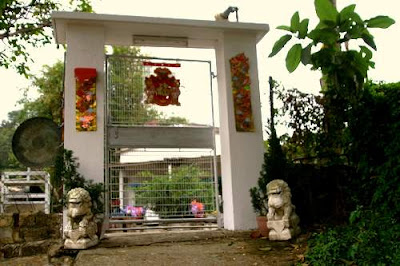
And even for their car parks...
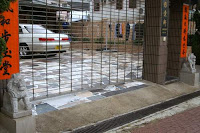
Everyone is fearing something.
Today it's fake eggs.
I hesitate to guess what tomorrow will bring.
(Enjoy your poached eggs.)
At least I don't have to worry about cholesterol anymore.
Tschuess,
Chris, Regina, and Pommes



